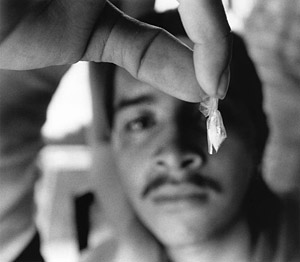
|  |  |  Health & Beauty Health & Beauty  
A New Ally in the Battle Against Cocaine Addiction
 Steve Pogonowski - Faculty of 1000: Biology and Medicine Steve Pogonowski - Faculty of 1000: Biology and Medicine
go to original
January 03, 2010


| | Though the effects of CocE can be overcome by a sufficiently large dose of cocaine, the present findings suggest that CocE has great promise as a drug abuse treatment. |  |
A recent study shows that a bacterial protein may help cocaine addicts break the habit.

Cocaine esterase (CocE) is a naturally-occurring bacterial enzyme that breaks down cocaine, thereby reducing its addictive properties. The efficacy of CocE in animals and its suitability for treatment of addiction has been limited by its short half-life in the body.

A recent study, published in the Journal of Pharmacology and Experimental Therapeutics and reviewed by Faculty of 1000 Medicine's Friedbert Weiss, demonstrates that a more stable version of CocE, double mutant or DM CocE, significantly decreased the desire for cocaine and prevented death from cocaine overdose.

In the study, rats were trained to self-administer cocaine by pressing a button in their cage, mimicking the need for regular doses of the drug during addiction. Rats treated with the double mutant form of CocE pressed the button to receive cocaine less often, suggesting that DM-CocE broke down the drug and dampened addiction.

DM-CocE decreased the rats' urge for cocaine but not for an addictive analogue, highlighting the degree of specificity for cocaine. Weiss notes that the DM-CocE enzyme also provides "long-lasting protection" against the toxic effects of a potentially lethal dose.

Though the effects of CocE can be overcome by a sufficiently large dose of cocaine, the present findings suggest that CocE has great promise as a drug abuse treatment.

Weiss says, "These therapeutic approaches may therefore not be "fail-safe" for reducing cocaine intake by determined users" but "long-acting forms of CocE represent potentially valuable treatment approaches not only for the prevention of cocaine-induced toxicity but also for ongoing cocaine abuse in humans."

www.blog.f1000.com | www.twitter.com/f1000 | www.youtube.com/Facultyof1000 |

 |
|  |



